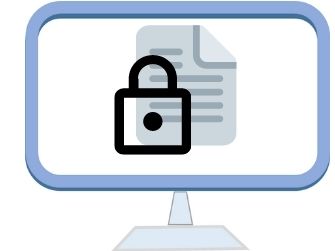PHP Login and logout script and example
 Depending on the visitors session condition whether user is logged in or not we can display different messages to the members. We should show an welcome messages to a logged in user like "Welcome john" with a logout button. Same way we if the member has not logged in then we can show login input box in that place or show the link to login page.
Depending on the visitors session condition whether user is logged in or not we can display different messages to the members. We should show an welcome messages to a logged in user like "Welcome john" with a logout button. Same way we if the member has not logged in then we can show login input box in that place or show the link to login page.
Checking session status in PHP to show login or logout link to the user and allowing access to page.
We can check the visitors session variable and display a login or logout link using one PHP IF condition. This is one example of php if and see detail Login script for full code. We will be using PHP isset function to check the existence of session variable.
Read more on PHP Session variables here
There are two types of pages here.
One is when user is logged in, we will display welcome message with logout link and for others ( not logged in ) a login link.
For example the home page of the site where member is not yet logged in but can check the content of the page
if((isset($_SESSION['userid']) and strlen($_SESSION['userid']) > 5)){
echo "Welcome $_SESSION[userid] <a href=setting.php>Settings</a> . <a href=logout.php>Logout</a>";
}else{
echo "<a href=signup.php>Sign UP</a> <a href=login.php>Login</a>";
}if((isset($_SESSION['userid']) and strlen($_SESSION['userid']) > 5)){
// Content of the page
}else{
echo "Please <a href='login.php?redirect=post.php'>Login</a> to post any topics";
}
Using multiple pages
There may be several pages where we will be restricting access to login members only. So to maintain access over multiple pages we will keep the code in a common file and include the file when ever required. This will help us in easy maintenance of site.Let us see how we will add login status to pages.
require "check.php";<?Php
if(!(isset($_SESSION['userid']) and strlen($_SESSION['userid']) > 2)){
echo "Please <a href=g_login.php>login</a> to use this page ";
exit;
}else{
echo "Welcome $_SESSION[userid] | <a href='logout.php'>Logout</a>|<a href='change.php'>Change Password</a>";
}
?>require "check.php";Scripts

Subhendu Mohapatra
Author
🎥 Join me live on YouTubePassionate about coding and teaching, I publish practical tutorials on PHP, Python, JavaScript, SQL, and web development. My goal is to make learning simple, engaging, and project‑oriented with real examples and source code.
Subscribe to our YouTube Channel here
This article is written by plus2net.com team.
https://www.plus2net.com

| Moses | 24-10-2014 |
| I am new to php.Could you explain the database part too please. | |
